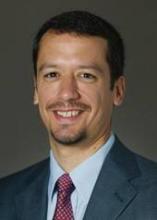Dr. Dan Garza is on the leading edge of research designed to improve our insight into the mechanics of mild traumatic brain injuries, or concussions. As the medical director of the San Francisco 49ers, Dr. Garza has firsthand experience with sports-related injuries.
He also treats college-level athletes at Stanford University in California, where he teaches and works in the sports medicine clinic. Since June, Dr. Garza and his team have been collecting real-time data on sports-related impacts using a modified accelerometer to calculate the force of an impact on the brain.
In an interview, Dr. Garza discussed how the tool works and his findings thus far.
Question: How did you use the accelerometer in your research?
Dr. Garza: It is a mouthpiece equipped with accelerometers, which measure XYZ acceleration forces on the brain; and gyrometers, which measure rotational acceleration. It’s held in the mouth, so we first had to make sure it was reliable in translating the readings it was getting from the mouth to tell us the true acceleration of the brain. To validate its efficacy, we first tested the device on a crash test dummy head. With the mouthpiece in place, we dropped the head about 4,000 times from different heights and positions. We wanted to make sure we were getting reliable readings in comparison to the gold standard of a crash test dummy. We certainly did.
Dr. Garza and his team of researchers spent 3 months validating the device. Then, they tested the device on Stanford’s football team.
Question: What was the methodology for testing the accelerometer?
Dr. Garza: We had about 70 players wear the mouthpiece during practices and games throughout the season. We had dentists take impressions and mold the pieces to fit each individual player. The mouthpiece was also equipped with three accelerometers and three gyrometers, and it collected real-time data about how many hits these kids were getting. The mouthpiece recorded the force and direction of the hits. We are now reviewing the data, and what we’re hoping to find is an introduction to the biomechanics of concussions.
Question: Have any of the findings so far surprised you?
Dr. Garza: One of the more surprising findings was that there are two blows that actually occur if a player hits the ground. The first blow is when the player actually hits, but as the player lands and hits the ground, there’s a second significant acceleration that occurs. As the torso hits the ground, the head whips again. It makes sense in hindsight, but it turns out that these secondary hits are actually very significant. They’re not small accelerations.
Question: How do you hope your research will improve the field of emergency medicine?
Dr. Garza: There are a lot of physicians who have experience with concussions, but there are also those who don’t. I think that emergency physicians are excellent at ruling out initial, potentially catastrophic brain trauma, but we probably aren’t so familiar with feeling comfortable not getting brain imaging in someone who is altered after a blow to the head in soccer.
The research that’s ongoing is to better characterize for our field the nature of concussions and what we should and should not expect to see. That will only happen if we understand the forces that are involved and the types of blows that really are consistent with concussions that may or may not need to be imaged.
Dr. Garza said he eventually hopes to use his findings to improve imaging techniques and to recommend improvements in concussion regulations.


